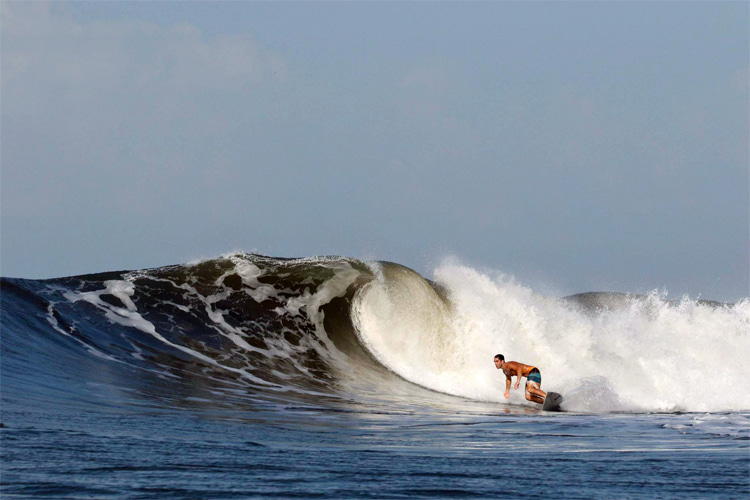When I first read that El Salvador was going to become Surf City, I thought it was kind of silly.
There are hundreds of small towns around the world that have good waves for traveling surfers who do not label themselves Surf City.
My favorite towns in the whole world - Haleiwa and Hanalei - have most likely the best waves on the planet, and they do not bother to call themselves Surf City.
I also read that Huntington Beach and Santa Cruz in California have for ages been competing with their respective team of lawyers for the right to be the only Surf City.
In June 2021, El Salvador hosted the ISA World Surfing Games at La Libertad under the slogan of Surf City.
At the end of the games, almost everyone agreed that it was a smashing success from a marketing point of view.
El Salvador was now known around the globe as a surfing destination with good waves.
The new government of Nayib Bukele, in a single stroke, had done way more than the previous governments combined to promote surf tourism in El Salvador.
In January 2022, in another marketing coup, the private airline Avianca announced that one of their planes was going to serve as a billboard to promote Surf City.
According to the government plan, the first phase of the Surf City was completed in La Libertad province with the ISA World Surfing Games and the construction of the bypass in the coastal highway that serves the stretch of land from La Libertad city to El Tunco.
At the end of 2021, the government announced Phase Two of Surf City with plans to start paving the 15 kilometers of coastal road from El Cuco to Punta Mango in the Wild East of El Salvador.
So far, The government has been very secretive about the details of the plans to develop this region.
But the government, sooner or later, will have to clarify exactly what these plans are because there is already turmoil brewing below the surface.
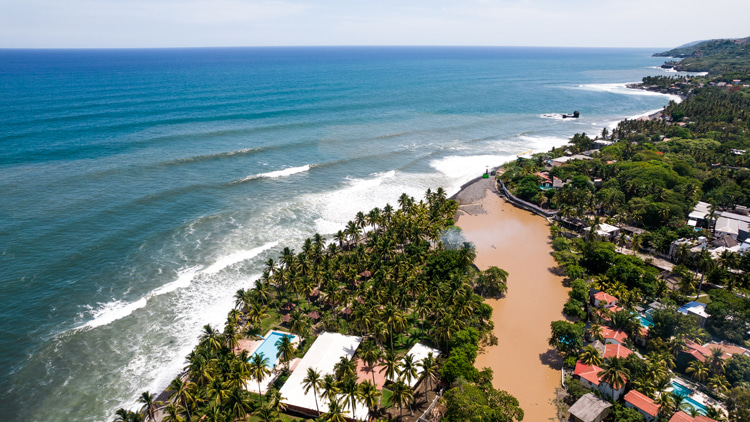
The Privatization of Public Beaches
In regards to wave quality, Punta Mango is very likely the second-best wave in El Salvador after Punta Roca.
Although both waves are right-hand point breaks with barreling sections, the vibe is way different at these two spots.
Punta Roca lies in an industrial town with lots of sewage and gang activity and is heavily localized.
On the other hand, Punta Mango, from the air, looks very green and underdeveloped, with very few buildings.
Gangs have been exterminated, there are no nightclubs and bars, and compared to the La Libertad region, the population is less than 1,000 inhabitants.
According to the websites of Santa Cruz and Huntington Beach, a Surf City is not just a marketing slogan but a complete package for economic development following a sustainable model that respects green zones and keeps the beach accessible to the public.
In this respect, El Salvador seems to have just copied the marketing concept of Surf City without the other components, at least for the first phase of Surf City in La Libertad.
El Salvador, since memorial times, has been following a fourth-world development model for beach towns where public green zones next to the water's edge are erased and privatized for the construction of a few hotels that deny access to the majority of the public.
According to Salvadoran law, all beaches in the country are public. However, this law has no weight at all and feels like a bad joke.
Most beaches in El Salvador, with the exception of ghetto beaches like El Majagual and El Cuco, have been privatized without using any lawyers.
Private land developers simply block or destroy by force public access roads leading to the surf.
If the only way to reach the surf is by using a helicopter or a boat, paying more than $100 a night for a room, or paying for a meal more than $30 in a hotel next to the water's edge, that beach is not public at all.
Since the announcement of the pavement of the road leading to Punta Mango, prices for real estate next to the water's edge have skyrocketed because land speculators have concluded that the same model from the past is going to be used at Punta Mango.
Already, there are individuals, with the help of corrupt lawyers, forging land titles so they can resell public green zones to foreign investors who want to build luxury hotels next to the water's edge.
The reasoning is that once you gain control of the land next to the water's edge, you will be able to privatize it and, therefore, control most of the profits from the development of the area of Punta Mango.
Somehow, it is weird that the old development model that has been used in El Salvador assigns zero value to green zones next to the water's edge.
In this model, the monetary value of a green zone is close to zero, and green zones are considered a real annoyance to peace-and-love environmentalists with no clue of how to create real estate value.
In El Salvador, the rich and poor fight for the right to build on the first row next to the water's edge, and once they get control of the land, they privatize it to deny access to competitors on the second row and the hills.
For a country that is super small, this is a complete waste of land resources.
Thousands of hectares with an ocean view or very close to the ocean have lost most of their value because they have no access to the beach.
The History of Punta Mango
Punta Mango has a unique history.
During the civil war of 1981-1990, Punta Mango was a battlefield between leftist guerrillas and a right-wing government.
After the peace accords of 1991, hardly anyone wanted to live in the Punta Mango area.
Since only a dozen surfers visited the area until 2000, the land had very little value.
Small lots less than 1 hectare close to the surf could be bought for less than $500.
Most of the undeveloped land and green zones were placed under the administration of Instituto Salvadoreño de Transformación Agraria (ISTA), a government organization that distributed land to low-income people.
When word spread about Punta Mango being a surf gem after 2005, land value began to appreciate slowly.
In 2021, when it was announced that Punta Mango is the new Surf City 2, land value increased exponentially.
The same lot that was worth $500 in 1990 could fetch $200,000 in 2022 if sold to a foreign investor wanting to build a luxury hotel next to the water's edge.
Punta Mango has now become a magnet for land resellers willing to do whatever, forge land titles, and kill campesinos to gain control of that valuable land.
From 1991 until the present, people working inside ISTA have been reselling lots with forged or no land titles.
To aggravate the situation, many campesinos do not own land but have been promised land under their name for more than three decades, which places them in legal limbo.
Forced Out of the Land
Most of the local population around Punta Mango is now fearful that Surf City is the beginning of the end for them.
Eventually, they will be forced out of the land where they were born.
It is not enough for Surf City to create revenue for hotels, airlines, and beverage companies.
A Surf City needs to create thousands of jobs so that people do not flee to the United States, where, most of the time, they are not really welcomed.
In the old times, campesinos would agree to accept $500 to get out of their land.
But nowadays, being forced out of Punta Mango to look for a job in the capital city of San Salvador is not the answer; there are no jobs there waiting for them.
To migrate to the United States costs around $8,000 to pay a coyote to get smuggled with no documents.
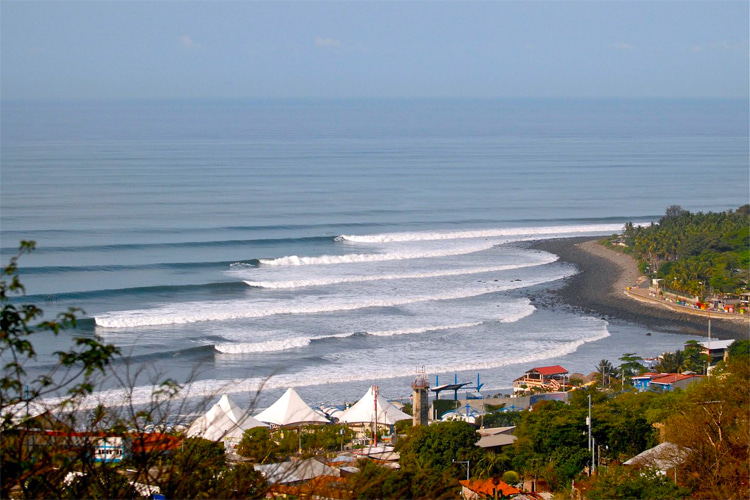
The Nicaragua Example
Neighboring Nicaragua is a great example of what can happen in El Salvador if Surf City is just a marketing slogan.
I lived in Nicaragua in 2016, in very optimistic times for surfing in Nicaragua.
In 2015, Nicaragua, under the guidance of President Ortega, was host to the ISA World Surf Games.
The government was offering foreign investors extremely cheap land with almost no taxes. Foreigners were buying land like crazy.
In addition, a Chinese developer was willing to invest $50 billion to build the Nicaragua Canal to compete with the Panama Canal.
The project was going to generate 50,000 jobs.
However, the Chinese government decided not to support the project because it was going to benefit Taiwan economically.
When the project fizzled and was finally canceled, Nicaragua's economy went on a downward spiral, and social unrest followed.
Surf tourism did not save Nicaragua at all.
Surf spots had been privatized, very few hotels were built, and for the amount of land they occupied, they only created hundreds of jobs.
Thousands of Nicaraguas from the coastal areas are currently coming to El Salvador in search of jobs.
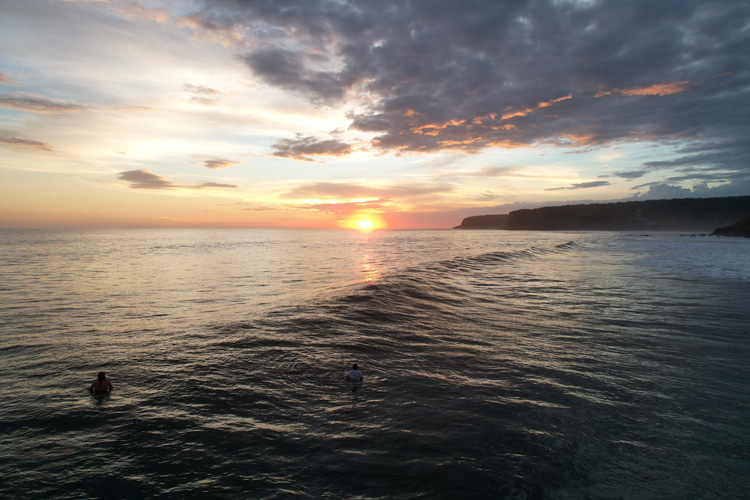
Hawaii and California: Green Zones Are Economy
What the current government of El Salvador needs to understand is that the destruction of the green zones for the privatization of Punta Mango is not the only way for economic development in El Salvador.
The current argument from the government is that hotel infrastructure is a must on the first row at Punta Mango to make international surf competitions possible.
If that were the case, there would be no big wave competitions at Peahi in Maui.
Peahi is located in a protected green zone where no hotel construction is allowed.
In spite of only a few hundred spectators watching the competition at the surf spot, millions of fans watch the competition on the internet and generate thousands of dollars in revenue to sponsor big wave surfers and benefit the economy of the Hawaiian Islands.
The North Shore in Oahu is another example of how green zones contribute to economic development.
The coastal highway from Haleiwa Beach to Sunset is about 13 kilometers, similar in distance to the coastal highway from La Libertad City to K-61.
No hotel development has been allowed on the North Shore of Oahu, and most tourists drive 60 kilometers from hotels in Waikiki.
In La Libertad province, hardly any foreigners that come to surf stay in the capital city of San Salvador.
Most stay at El Tunco, right next to the water's edge of La Bocana and El Sunzal.
When you compare the number of tourists that visit the North Shore of Oahu with La Libertad province in El Salvador, there is no contest at all - clearly, the North Shore of Oahu wins by a wide margin.
Punta Mango land developers could borrow a page from how the land has been developed at the famous California surf spot of Lower Trestles.
Here, a green zone has been established between the water's edge and the coastal highway, and no hotels or homes can be constructed.
Surfers are not complaining about having to walk or bike for about one kilometer to reach the surf.
If Punta Mango followed the Trestles model, it would clearly benefit the environment and prevent the contamination that El Tunco has never resolved.
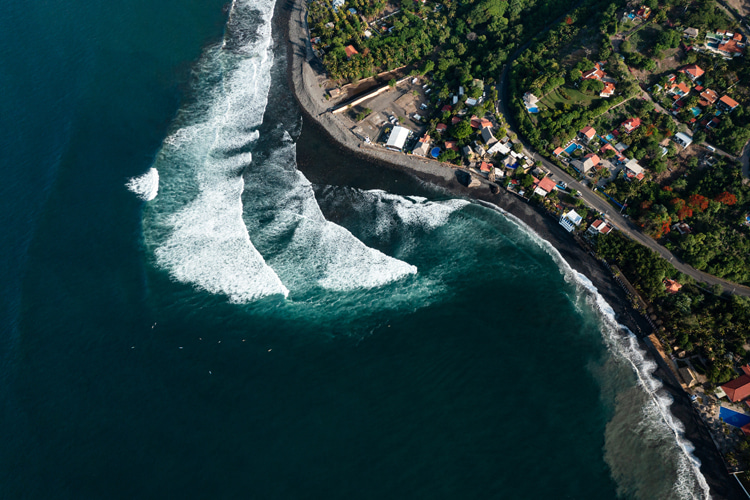
A Time Bomb
From 2005 until the present, hotels at El Tunco have been dumping their sewage into the ocean because water treatment plants cannot be afforded.
This is a time bomb.
Sooner or later, people are going to start dying at El Tunco from some kind of disease caused by sewage.
Forcing hotels to retreat 500 meters from the water's edge will also prevent seawalls from being knocked by the waves.
El Salvador municipalities have no money to compensate hotels or homeowners for seawalls and flooding.
Small tsunamis are also a real possibility at Punta Mango.
I am not against the pavement of the road to Punta Mango or against more hotels being built to accommodate more surf tourists.
I voted for President Bukele in the elections, and I consider him the smartest president El Salvador has had in the last 100 years.
I even support many of the current projects of Bukele, like making Bitcoin legal tender in El Salvador and his law and order plan to decimate gangs.
But I am not a blind supporter of everything that Bukele proposes.
There are still many corrupt officials inside the political party Nuevas Ideas that Bukele founded.
I guess criticizing the plans of the president I voted for does not make me a good politician.
Words by Jorge Dominguez | Spokesman at Adescomar
